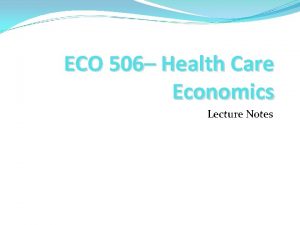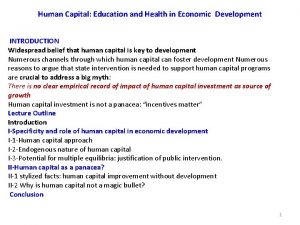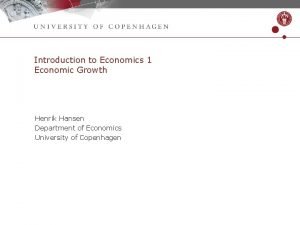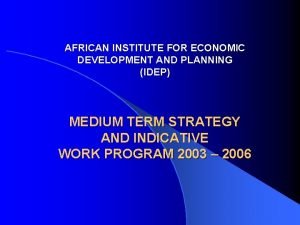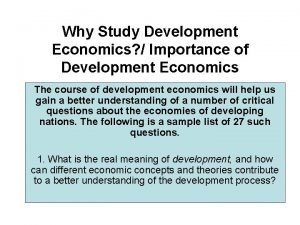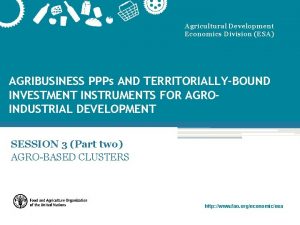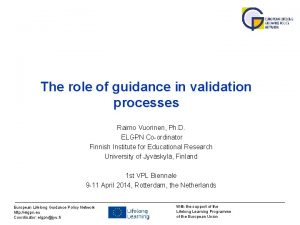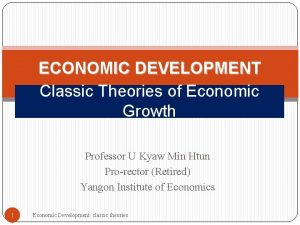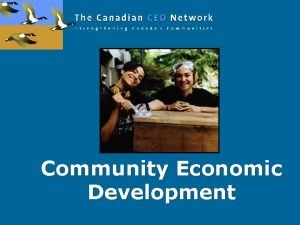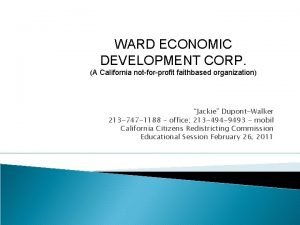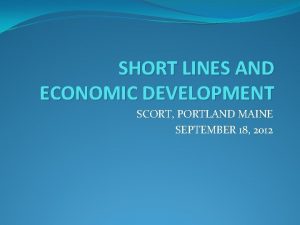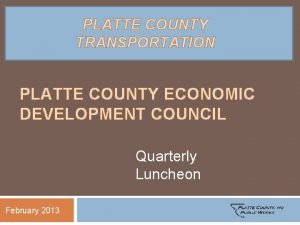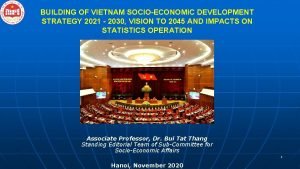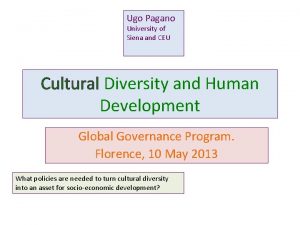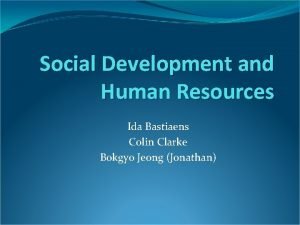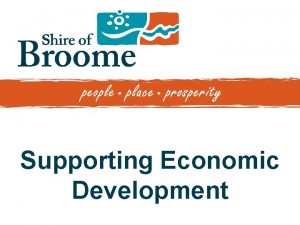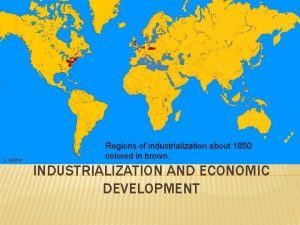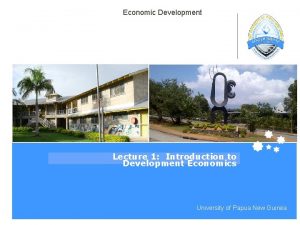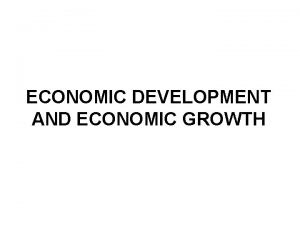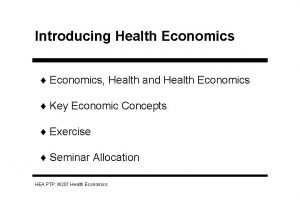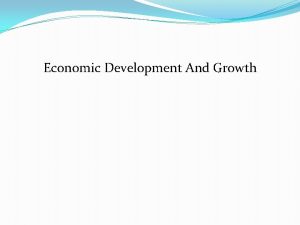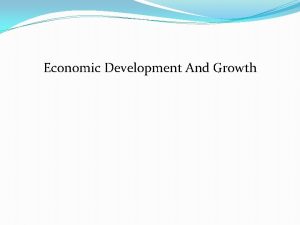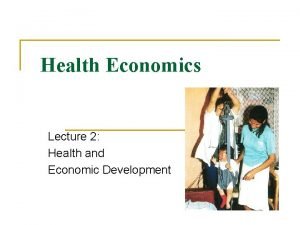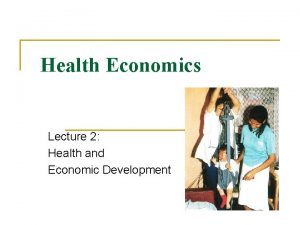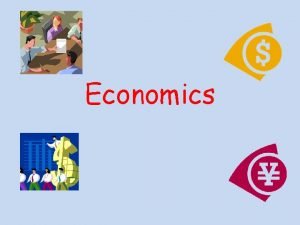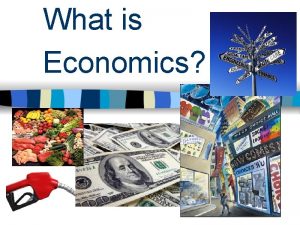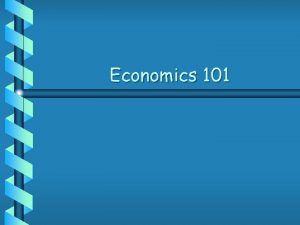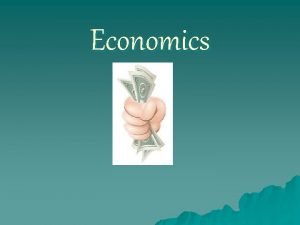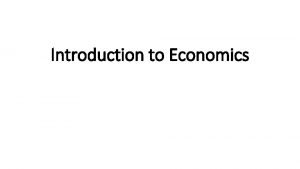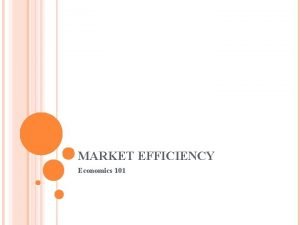Lecture 1 Development Economics and Economic Development Copyright


































- Slides: 34

Lecture 1 Development Economics and Economic Development Copyright © 2012 Pearson Addison-Wesley. All rights reserved. 1 -1

(Partly from Todaro and Smith- Development Economics, Addison-Wesley, 2012. ) – The Nature of Development Economics • Greater scope than traditional neoclassical economics and political economy. Rethinking Theory and Empirics. – Why Study Questions Development Economics? Some Critical – The Important Role of Values in Development Economics – Growth and Development Copyright © 2012 Pearson Addison-Wesley. All rights reserved. 1 -2

Figure 1. 1 World Income Distribution Copyright © 2012 Pearson Addison-Wesley. All rights reserved. 1 -3

1. 2 Economics and Development Studies • Economies as Social Systems: The Need to Go Beyond Simple Economics • Social Systems – Interdependent relationships between economic and noneconomic factors • Success or failure of development policy – Importance of taking account of institutional and structural variables along with more traditional economic variables Copyright © 2012 Pearson Addison-Wesley. All rights reserved. 1 -4

1. 3 What Do We Mean by Development? • Traditional Economic Measures – Gross National Income (GNI) – Income per capita – Utility of that income? • The New Economic View of Development – Leads to improvement in wellbeing, more broadly understood • Amartya Sen’s “Capability” Approach – Functionings as an achievement – Capabilities as freedoms enjoyed in terms of functionings – Development and happiness – Well being in terms of being well and having freedoms of choice – “Beings and Doings”: Copyright © 2012 Pearson Addison-Wesley. All rights reserved. 1 -5

1. 3 What Do We Mean by Development? (cont’d) • Three Core Values of Development – Sustenance: The Ability to Meet Basic Needs – Self-Esteem: To Be a Person – Freedom from Servitude: To Be Able to Choose – Correlation of the Above with levels of Income – Growth and Distribution Copyright © 2012 Pearson Addison-Wesley. All rights reserved. 1 -6

Income and Capability – A critical question is how far growth and levels of income are associated with changing capabilities – Public vs. Private provision of resources towards developmental needs – Form and Extent of State Intervention – How to tackle problems of Corruption, Leakage, Accountability – Growth related factors more talked about but effectively undermined Copyright © 2012 Pearson Addison-Wesley. All rights reserved. 1 -7

Figure 1. 2 Income and Happiness: Comparing Countries Copyright © 2012 Pearson Addison-Wesley. All rights reserved. 1 -8

1. 3 What Do We Mean by Development? (cont’d) • The Central Role of Women – To make the biggest impact on development, societies must empower and invest in women • The Three Objectives of Development – Increase availability of life-sustaining goods – Raise levels of living – Expand range of economic and social choices Can all three above be achieved by better credit conditions, markets and technology? Social Choice is the Issue with Health and Education. Copyright © 2012 Pearson Addison-Wesley. All rights reserved. 1 -9

1. 4 The Millennium Development Goals • Millennium Development goals (MDGs) – Eight goals adopted by the United Nations in 2000 • Eradicate extreme poverty and hunger • Achieve universal primary education • Promote gender equality and empower women • Reduce child mortality • Improve maternal health • Combat HIV/AIDS, malaria, and other diseases • Ensure environmental sustainability • Develop a global partnership for development Copyright © 2012 Pearson Addison-Wesley. All rights reserved. 1 -10

• Unfortunate Exclusion of Social Mobility as a major indicator of Underdevelopment. Research has not made to the Text Books. • It is a critical indicator measuring probability distribution of jumping the fence. Copyright © 2012 Pearson Addison-Wesley. All rights reserved. 1 -11

1. 5 Conclusions • The importance of Development Economics • Inclusion of non-economic variables in designing development strategies • Understanding why we need to go beyond Markets and Technology and Designing Policy Intervention • Financing of Development Copyright © 2012 Pearson Addison-Wesley. All rights reserved. 1 -12

Common Characteristics of Developing Countries • These features in common are on average and with great diversity, in comparison with developed countries: – Lower levels of living and productivity – Lower levels of human capital – Higher levels of inequality and absolute poverty – Higher population growth rates – Greater social fractionalization – Larger rural population - rapid migration to cities – Lower levels of industrialization and manufactured exports – Adverse geography – Underdeveloped financial and other markets – Colonial Legacies - poor institutions etc. Copyright © 2012 Pearson Addison-Wesley. All rights reserved. 1 -13

2. 2 Basic Indicators of Development: Real Income, Health, and Education • Gross National Income (GNI) • Gross Domestic Product (GDP) • PPP method instead of exchange rates as conversion factors • Other possible Innovative Measure • Degree of Income/Social Mobility Copyright © 2012 Pearson Addison-Wesley. All rights reserved. 1 -14

Figure 2. 2 Income Per Capita in Selected Countries (2008) Copyright © 2012 Pearson Addison-Wesley. All rights reserved. 1 -15

Table 2. 2 A Comparison of Per Capita GNI, 2008 Copyright © 2012 Pearson Addison-Wesley. All rights reserved. 1 -16

2. 3 Holistic Measures of Living Levels and Capabilities • • Health Life Expectancy Education Human Development Index • Basic Index= (Actual – Min)/(Max- Min) • Must lie between 0 and 1 • HDI as a holistic measure of Quality of Life Copyright © 2012 Pearson Addison-Wesley. All rights reserved. 1 -17

Table 2. 3 Commonality and Diversity: Some Basic Indicators Copyright © 2012 Pearson Addison-Wesley. All rights reserved. 1 -18

Table 2. 4 2009 Human Development Index for 24 Selected Countries (2007 Data) Copyright © 2012 Pearson Addison-Wesley. All rights reserved. 1 -19

Table 2. 5 2009 Human Development Index Variations for Similar Incomes (2007 Data) Copyright © 2012 Pearson Addison-Wesley. All rights reserved. 1 -20

What is new in the New HDI? 1. Calculating with a geometric mean • Probably most consequential: The index is now computed with a geometric mean, instead of an arithmetic mean • New HDI takes the cube root of the product of the three component indexes • The traditional HDI calculation assumed one component traded off against another as perfect substitutes, a strong assumption • The reformulation now allows for imperfect substitutability • Note that individual impact is now conditional on other elements Copyright © 2012 Pearson Addison-Wesley. All rights reserved. 1 -21

What is new in the New HDI? 2. Other key changes: • Gross national income per capita replaces gross domestic product per capita • Revised education components: now using the average actual educational attainment of the whole population, and the expected attainment of today’s children • The maximum values in each dimension have been increased to the observed maximum rather than given a predefined cutoff • The lower goalpost for income has been reduced due to new evidence on lower possible income levels • ENVIRONMENT AND GENDER ISSUES –LESS DICSUSSED IN FORMATION OF INDICES. UNFORTUNATELY CANT COVER IN THIS COURSE. BUT THESE ARE CRITICAL ISSUES. Copyright © 2012 Pearson Addison-Wesley. All rights reserved. 1 -22

Table 2. 6 The 2010 New Human Development Index, 2008 Data Copyright © 2012 Pearson Addison-Wesley. All rights reserved. 1 -23

Figure 2. 5 Under-5 Mortality Rates, 1990 and 2005 Copyright © 2012 Pearson Addison-Wesley. All rights reserved. 1 -24

Table 2. 8 Primary School Enrollment and Pupil-Teacher Ratios, 2010 Copyright © 2012 Pearson Addison-Wesley. All rights reserved. 1 -25

Figure 2. 7 Number of People Living in Poverty by Region, 1981– 2005 Copyright © 2012 Pearson Addison-Wesley. All rights reserved. 1 -26

Table 2. 10 The Urban Population in Developed Countries and Developing Regions Copyright © 2012 Pearson Addison-Wesley. All rights reserved. 1 -27

Table 2. 11 Share of the Population Employed in the Industrial Sector in Selected Countries, 2004 -2008 (%) Copyright © 2012 Pearson Addison-Wesley. All rights reserved. 1 -28

2. 4 Characteristics of the Developing World: Diversity within Commonality 9. 10. Underdeveloped Financial and Other markets – Imperfect markets – Incomplete information Colonial Legacy and External Dependence – Institutions – Private property – Personal taxation – Taxes in cash rather than in kind Copyright © 2012 Pearson Addison-Wesley. All rights reserved. 1 -29

2. 5 How Low-Income Countries Today Differ from Developed Countries in Their Earlier Stages • Eight differences – Physical and human resource endowments – Per capita incomes and levels of GDP in relation to the rest of the world – Climate – Population size, distribution, and growth – Historic role of international migration – International trade benefits – Basic scientific/technological research and development capabilities – Efficacy of domestic institutions Copyright © 2012 Pearson Addison-Wesley. All rights reserved. 1 -30

2. 6 Are Living Standards of Developing and Devolved Nations Converging? – Evidence of unconditional convergence is hard to find – But there is increasing evidence of “per capita income convergence, ” weighting changes in per capita income by population size Copyright © 2012 Pearson Addison-Wesley. All rights reserved. 1 -31

Figure 2. 8 Relative Country Convergence: World, Developing Countries, and OECD Copyright © 2012 Pearson Addison-Wesley. All rights reserved. 1 -32

Figure 2. 8 Relative Country Convergence: World, Developing Countries, and OECD (cont’d) Copyright © 2012 Pearson Addison-Wesley. All rights reserved. 1 -33

Nature and Role of Economic Institutions • • • Institutions provide “rules of the game” of economic life Provide underpinning of a market economy Include property rights; contract enforcement Can work for improving coordination, Restricting coercive, fraudulent and anti-competitive behavior Providing access to opportunities for the broad population. Constraining the power of elites, and managing conflict Provision of social insurance Provision of predictable macroeconomic stability Copyright © 2012 Pearson Addison-Wesley. All rights reserved. 1 -34
 Economic development vs economic growth
Economic development vs economic growth Economic growth vs economic development
Economic growth vs economic development 01:640:244 lecture notes - lecture 15: plat, idah, farad
01:640:244 lecture notes - lecture 15: plat, idah, farad School of business and economics maastricht
School of business and economics maastricht Principles of economics powerpoint lecture slides
Principles of economics powerpoint lecture slides Land economics lecture notes
Land economics lecture notes Health economics lecture notes
Health economics lecture notes Elements of mathematical economics
Elements of mathematical economics Basic concept of managerial economics
Basic concept of managerial economics Lesson 2 our economic choices
Lesson 2 our economic choices Human capital education and health in economic development
Human capital education and health in economic development Economic growth and development
Economic growth and development Swodf
Swodf African institute for economic development and planning
African institute for economic development and planning Development economics
Development economics Development economics
Development economics Development economics
Development economics International development economics associates
International development economics associates Wake county economic development
Wake county economic development Economic social development
Economic social development Northern waterfront economic development initiative
Northern waterfront economic development initiative Economic social development
Economic social development Dualistic development thesis
Dualistic development thesis Positive effects of primate cities on economic development
Positive effects of primate cities on economic development Canadian community economic development network
Canadian community economic development network Ward economic development corporation
Ward economic development corporation Scortportland
Scortportland Platte county economic development
Platte county economic development Economic development advisor
Economic development advisor Vietnam socio-economic development strategy for 2021-30
Vietnam socio-economic development strategy for 2021-30 Obstacles to economic development
Obstacles to economic development Georgia academy for economic development
Georgia academy for economic development California association for local economic development
California association for local economic development Classical theory of economic development slideshare
Classical theory of economic development slideshare Defination of economic development
Defination of economic development






